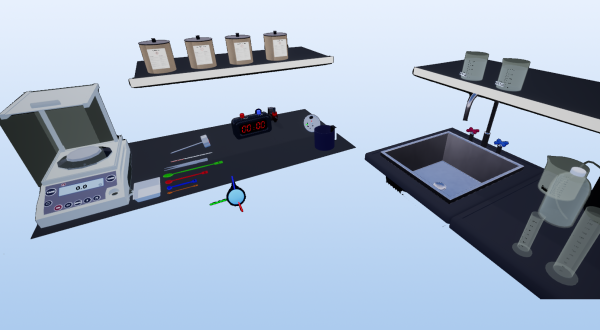
This laboratory session is designed to delve into the principles of thermochemistry through the exploration of the exothermic reaction between magnesium (Mg) and hydrochloric acid (HCl).
Participants will engage in measuring temperature changes resulting from this chemical reaction, using these measurements to discuss concepts such as enthalpy and the conservation of energy.
Educational Goals
- Understanding exothermic reactions: Students will observe the temperature increase that characterizes exothermic reactions, where energy is released as heat, providing a tangible example of this type of chemical reaction.
- Application of energy conservation law: The experiment serves as a practical illustration of the law of energy conservation, demonstrating how energy is transformed from one form to another—in this case, from chemical energy to thermal energy.
- Calculation of enthalpy: By measuring temperature changes during the reaction, students will learn to calculate the reaction’s enthalpy, offering a quantitative view of the energy released or absorbed during a chemical process.
- Experimental precision: Emphasizes the importance of precision in weighing reagents, measuring volumes and temperatures to achieve reliable and reproducible results.
- Safety protocols: Highlights the necessity of adhering to safety protocols when handling reactive and corrosive substances like HCl and magnesium, and the use of personal protective equipment such as safety glasses, gloves, and lab coats.
This laboratory provides a hands-on opportunity to explore exothermic reactions and the fundamental principles of thermochemistry. By analyzing the temperature changes during the reaction between magnesium and hydrochloric acid, students gain a comprehensive understanding of reaction enthalpy and the conservation of energy in chemical processes. This session not only reinforces foundational chemistry principles but also enhances students’ skills in experimental precision and safety, contributing to their overall competence in scientific experimentation.
Protocol
- Place the weighing boat on the balance pan.
- Press tare to reset to zero.
- Weigh the desired amount of magnesium powder (Mg) – approximately 0.2g.
- Place the reagent in the calorimeter.
- Measure the desired quantity of hydrochloric acid (HCl) 0.2 M (50 to 150 mL).
- Note the initial temperature of the HCl.
- Insert the thermometer into the hole located on the left side of the top of the lid.
- Start the stopwatch by pressing the red button.
- Pour 0.2 M HCl into the calorimeter.
- Put the lid on the calorimeter.
- Activate the agitator by pressing the green button on the calorimeter lid.
- The graph of temperature as a function of time is on the tablet (graph tab).
- Record the final temperature when the reaction ends (between 3 to 4 minutes).
- The results can be found in the results tab on the tablet.
- Empty the contents of the calorimeter into the recycling bin and clean with distilled water.
Note: the reaction is accelerated 10 times faster; to more easily observe the complete reaction.
Anticipated Outcomes
- 0.2076 g of Mg(s) is 0.0085 moles, which will produce 440 kJ/mole of Mg.
- In HCl 0.2M, the temperature increase will be 8℃, in about 225 seconds.
Summary of Assignment by Grade Range
Grades 3-5 (Ages 8-10)
- Focus: Basic introduction to exothermic reactions and temperature changes.
- Activities: Observing temperature increase during the reaction between magnesium and hydrochloric acid, simple discussions on energy release, basic safety instructions.
Grades 6-8 (Ages 11-13)
- Focus: Intermediate understanding of exothermic reactions, energy conservation, and temperature measurement.
- Activities: Conducting the reaction between magnesium and hydrochloric acid, measuring temperature changes, understanding energy transformation, following detailed safety protocols.
Grades 9-12 (Ages 14-18)
- Focus: Advanced understanding of thermochemistry, reaction enthalpy, and experimental precision.
- Activities: Accurately conducting the reaction, measuring and recording temperature changes, calculating enthalpy, analyzing energy conservation, detailed recording and interpretation of results, adhering to advanced safety protocols, reinforcing concepts of thermochemistry and energy conservation.
Laboratory essentials
Instruments
- Beaker (1000ml)
- Calorimeter
- Electronic Scale
- Graduated Cylinders (70ml & 250ml)
- Spatulas
- Thermometers
- Timer
- Tweezers
Products
- HCl 0.2 M (solution)
- Magnesium (powder)